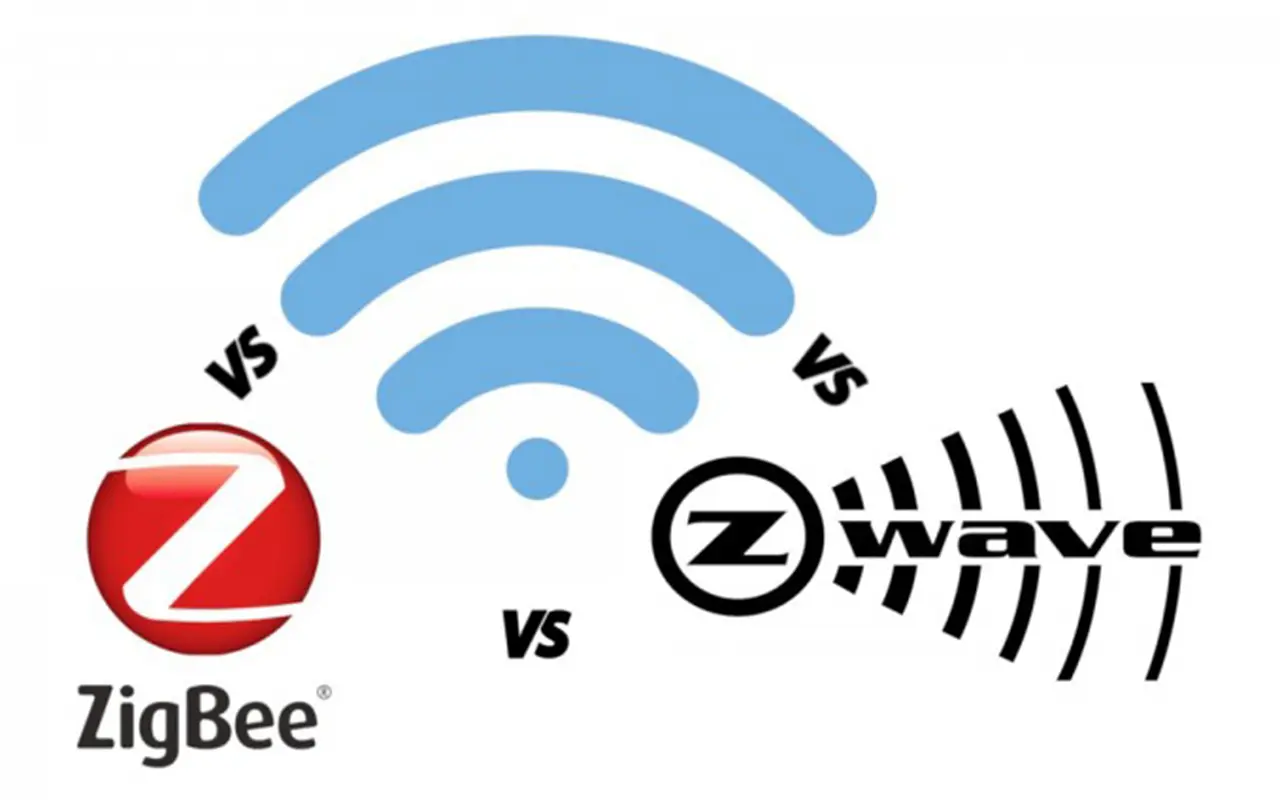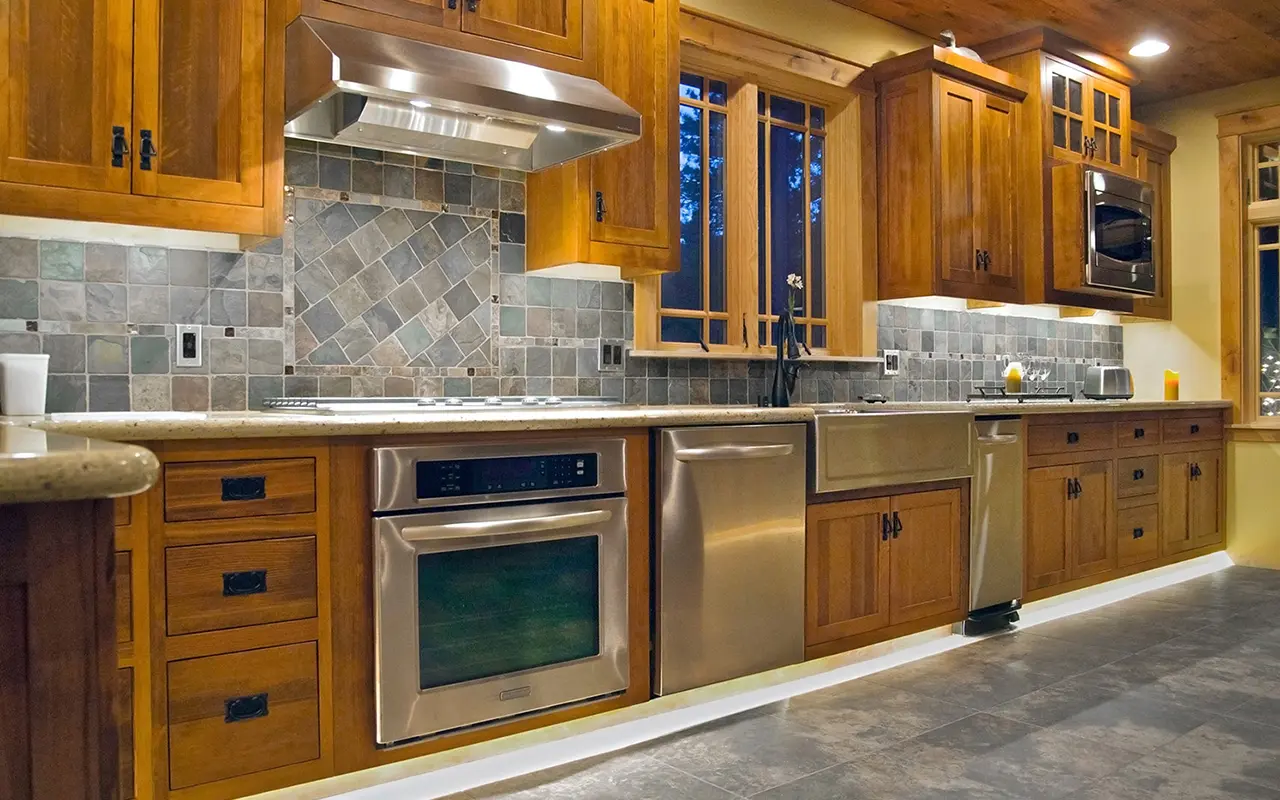Diving into the smart home realm is like stepping into a futuristic world where convenience, efficiency, and security are at your fingertips. With a tap or a voice command, you can control lights, regulate thermostats, and secure your home. Yet, before you traverse this smart home journey, the road forks at one critical point: choosing the proper communication protocol.
The heartbeats of any smart home are the communication protocols that ensure your devices speak the same language. The decision between Z-Wave, Zigbee, and WiFi can significantly impact your smart home experience, making it a pivot upon which your smart home’s success swings.
Understanding the Basics
The ABCs of Z-Wave, Zigbee, and WiFi
Delving deeper into the basics:
Z-Wave: Heralding a robust wireless communication protocol, Z-Wave orchestrates a mesh network where each device or node can relay signals across the ecosystem. This mesh network fortifies the communication backbone of your smart home, ensuring signals find their way even in a congested environment. On a sub-1GHz band, Z-Wave avoids the crowded 2.4GHz spectrum, reducing interference and promoting a more stable connection.
Zigbee: While sharing the mesh networking pedigree with Z-Wave, Zigbee operates on the 2.4GHz frequency. It’s an open standard protocol that engenders a broader adoption among manufacturers, fostering a diverse and competitive market. The higher frequency offers an edge in data transmission rates and range, albeit at the expense of potential interference within the crowded 2.4GHz spectrum.
WiFi: The quintessential household name in wireless connectivity. Unlike Z-Wave and Zigbee, WiFi doesn’t naturally support mesh networking, though modern advancements have birthed mesh WiFi systems. Known for high-speed internet connectivity, WiFi is a juggernaut in data transmission rates, making it a suitable choice for bandwidth-intensive smart home applications.
Features Comparison
Speed, Range, and Power Consumption
To encapsulate the differences succinctly, consider the following expanded table:
| 特徴 | Z-Wave | Zigbee | WiFi |
|---|---|---|---|
| Speed | Low (up to 100kbps) | Moderate (up to 250kbps) | High (up to 1300Mbps) |
| Range | Medium (up to 100 meters) | High (up to 200 meters) | High (variable, dependent on router and environmental factors) |
| 消費電力 | Low (ideal for battery-operated devices) | Low (excellent for power-constrained setups) | High (more suited for powered devices) |
Ecosystem and Device Compatibility
The smart home landscape is a bustling ecosystem with myriad devices and platforms. WiFi, with its universal appeal, stands tall in device compatibility. Its widespread adoption has spurred manufacturers to craft an extensive array of smart gadgets ready to meld into your daily routine seamlessly.
On the flip side, although Z-Wave and Zigbee might appear as the underdogs, they have carved a niche in fostering a seamless dialogue among devices within a controlled environment. These protocols conjure a cohesive network through dedicated hubs where devices intercommunicate efficiently, regardless of the brand or manufacturer. This orchestrated communication paves the way for a more integrated and reliable smart home experience, albeit with a steeper learning curve for the uninitiated. With the right hub bridging the conversation, Z-Wave and Zigbee can become powerful conduits for your smart home aspirations.
Z-Wave: The Silent Operator
A Deep Dive into Z-Wave
Z-Wave, the unsung hero in smart home protocols, operates with a quiet efficacy that often goes unnoticed. At the heart of its prowess lies the mesh network capability, a feature that amplifies signal reliability across the expanse of your home. This distinctive characteristic orchestrates a symphony of communication among devices, rendering Z-Wave a robust choice for those yearning for a coherent, responsive smart home setup. The network’s ability to self-heal, rerouting communications if a node goes offline, further fortifies its reliability. Moreover, its operation on a dedicated sub-1GHz frequency band sidesteps the traffic common in the 2.4GHz band, thereby minimizing interference and ensuring a smooth dialogue among your smart gadgets.
Pros and Cons
Pros:
Mesh Network Architecture: Enhances communication reliability, ensuring signals find their way even in challenging environments.
Dedicated Frequency Band: Operates in a less congested frequency, reducing interference and promoting stable connections.
Cons:
Device Compatibility: While growing, the ecosystem may not be as expansive as WiFi, potentially limiting your choice of devices.
Zigbee: The Efficient Performer
Uncovering Zigbee
Zigbee emerges as an efficient performer in the bustling theatre of smart home protocols. With its open standard framework and high-frequency operation, Zigbee promises speed and invites a broader spectrum of devices into its fold. Much like its counterpart Z-Wave, Zigbee’s mesh network is the linchpin that ensures steadfast communication among devices, establishing a stable, reliable smart home ecosystem. Moreover, its ability to support many devices in a single network makes it a scalable choice for burgeoning smart homes.
Pros and Cons
Pros:
Open Standard: Invites many devices, fostering a rich, versatile ecosystem.
Mesh Network Infrastructure: Promotes reliable communication, ensuring a seamless device dialogue.
Cons:
Higher Frequency Operation: Operating in the crowded 2.4GHz band could result in interference, potentially affecting communication quality.
WiFi: The Familiar Face
WiFi Connectivity Unveiled
WiFi, the ubiquitous herald of wireless connectivity, must be introduced in modern households. Its high-speed connectivity is a boon for bandwidth-intensive tasks, making it a quintessential choice for streaming, gaming, and real-time applications within a smart home environment. However, the absence of a native mesh networking feature could wrench the seamless communication dream, especially in a densely populated smart device environment.
Pros and Cons
Pros:
High-Speed Connectivity: The hallmark of WiFi, ideal for bandwidth-guzzling applications, ensuring a smooth, lag-free experience.
Ubiquitous Adoption: With a vast sea of compatible devices, WiFi’s extensive ecosystem is a lure for those seeking a hassle-free smart home setup.
Cons:
Lack of Native Mesh Networking: This could be a bottleneck in ensuring seamless communication across a swarm of smart devices, necessitating additional hardware or mesh WiFi systems for bridging the gap.
Security Aspects
スマートホームを守る
セキュリティは依然として、堅牢なスマート・ホーム・セットアップの基礎である。Z-Wave、Zigbee、WiFiの各プロトコルは、それぞれ独自のセキュリティ・フレームワークを導入している。Z-WaveとZigbeeは集中型ハブ内で動作し、WiFiセットアップでよく見られるクラウドベースの操作に関連するリスクを最小限に抑える可能性がある。このハブ中心の運用により、外部の脅威に対する絶縁層が追加され、スマートホームデバイスが相互作用するための強固な環境が構築される。逆に、クラウド中心の運用では、WiFiが適切に保護されなければ、スマートホームのセットアップが多くの外部脅威にさらされる可能性があります。強固な暗号化メカニズムを確保し、安全なパスワードを使用することで、WiFi対応スマートホームのセキュリティ・インフラを強化することができる。
ユースケースとアプリケーション実際のプロトコル性能
理論的な話を超えて、これらのプロトコルの実世界での性能は、その真の実力を示している。例えば、Z-Waveのメッシュ・ネットワーキング能力は、信号の信頼性が重要な、広大な住宅において画期的な変化をもたらす可能性がある。Z-Waveは、障害物や距離がデバイス間の通信を妨げる可能性のある環境において輝きを放つ。一方、Zigbeeの高い周波数とオープンな標準規格は、さまざまなメーカーのさまざまなスマートガジェットでにぎわう環境で役立つだろう。一方、高速な接続性を持つWiFiは、帯域幅を必要とするタスクで選択されるプロトコルとして登場し、スマートホームでのシームレスなストリーミングやゲーム体験を保証する。
ベストフィットの決定Zigbee、Z-Wave、それともWiFi?
スマートホームのセットアップ
決断の要点は、あなたの個人的な好みとスマートホームのセットアップの具体的な要求にかかっている。デバイスの通信を強化するメッシュネットワークで、クラウドレス・コントロールを目指しているのか?Z-WaveやZigbeeがあなたの忠実な味方になるかもしれません。それとも、高速接続と幅広いデバイスの互換性をお望みですか?WiFiが最適なプロトコルかもしれない。各プロトコルは、スマートホームのエコシステムの中でニッチを切り開き、多様なニーズや好みに対応している。
スマートホーム・コネクティビティの将来動向:今後の進歩とその意味
スマートホーム・コネクティビティの地平線は期待に輝いている。5Gや6E WiFiのような進歩は、スマートホームのプロトコルの輪郭を再定義する準備が整っている。これらの技術的飛躍は、既存のプロトコル間の境界を曖昧にし、スマートホーム接続の新たな時代の到来を告げる可能性がある。より高速で信頼性の高い接続オプションが統合されれば、これらのプロトコルの最良の機能が集約され、より安全で信頼性が高く、汎用性の高い新世代のスマートホーム・セットアップが生まれる可能性がある。
ハブの互換性と参入障壁
デバイスをシームレスにブリッジング
デバイス間の互換性は、調和のとれたスマートホームのセットアップの核心である。プロトコルに関係なく多くのデバイスと通信可能な、よりユニバーサルなハブへの移行は、参入障壁が大幅に低くなる未来の証である。これにより、デバイスが異なるプロトコルの境界を越えて楽に通信する、シームレスなスマートホーム体験への門戸が開かれる可能性がある。
エントリーコストの評価
スマートホームのセットアップに最初に着手するには、経済的な考慮が必要だ。WiFiデバイスは一般的に低価格で魅力的だが、時間の経過とともに交換やアップグレードが必要になる可能性があるため、総所有コストは上昇する可能性がある。逆に、Z-WaveやZigbeeの初期投資は高くなる可能性がある。それでも、信頼性が高く安定した動作は、長期的には費用対効果が高く、採用の説得力がある。
よくある質問
スマートホームへの道のりには疑問がつきものです。ここでは、よくある質問をいくつか取り上げ、あなたの道をさらに啓発します:
デバイスの通信範囲が最も広いプロトコルは?
ZigbeeとWiFiは、一般的にZ-Waveと比較して優れた範囲で優位に立つ。WiFiはその高速接続性により、しばしば広い範囲をカバーし、より広いスペースに適した選択肢となる。一方、Zigbeeは高周波数で動作するため、優れた範囲をカバーし、デバイスが長距離にわたって接続されることを保証します。
これらのプロトコルは干渉問題に対してどうなのか?
Z-Waveは、908.42MHzという独自の動作周波数のおかげで干渉問題を軽減している。この周波数帯は、ZigbeeやほとんどのWiFiスマートホーム・デバイスが動作する混雑した2.4GHz帯よりもかなり低い。このユニークな周波数割り当てにより、Z-Waveは一般的な干渉問題のないスムーズな動作を実現している。
1つのスマートホームのセットアップで複数のプロトコルを統合することは可能ですか?
もちろんです!適切なハブがあれば、異なるプロトコルで動作するデバイスを橋渡しし、調和のとれたスマートホームエコシステムを構築することができます。Hubitat、Homeseer、またはOpenHabのようなハブは、複数のプロトコルを統合し、スマートホームデバイス間のシームレスな通信を確保するための優れた選択肢です。
どちらのプロトコルが電力効率が高いか?
電力効率に関しては、Z-WaveとZigbeeがリードしている。どちらのプロトコルも低消費電力ソリューションとして設計されており、スマートホームがリソースを消耗することなく効率的に動作することを保証します。これは、多数のスマートデバイスがあるセットアップでは特に有益です。
WiFiの高速接続は、スマートホームのセットアップにどのような影響を与えるのか?
WiFiの高速コネクティビティは、帯域幅を多く必要とするタスクに威力を発揮します。高解像度ビデオのストリーミングでも、スマートホームデバイス間のスムーズな通信の維持でも、WiFiはシームレスな体験を保証します。しかし、スマートホームがスムーズに動作するためには、負荷に対応できる堅牢なWiFiネットワークが不可欠です。
メッシュネットワークがないことは、スマートホーム環境におけるWiFiの欠点でしょうか?
WiFiにメッシュ・ネットワークがないことは、特にスマート・デバイスが密集している環境では欠点と考えられる。Z-WaveやZigbeeとは異なり、WiFiにはデバイス間の信号の信頼性を高めるメッシュ・ネットワーク機能がないため、賑やかなスマート・ホームのセットアップで通信障害が発生する可能性がある。
どのプロトコルが、より幅広い機器との互換性がありますか?
WiFiは一般的に、そのユビキタスな採用により、より幅広いデバイスの互換性を誇っている。多くのスマートホームガジェットはWiFi接続を内蔵しており、より普遍的な選択肢となっている。しかし、Zigbeeのオープン・スタンダードもまた、それなりのデバイス互換性を育んでいる。
Z-WaveとZigbeeは、スマートホームのセットアップにおいて、どのようにして信頼性の高い通信を実現しているのか?
Z-WaveもZigbeeも、デバイス間の通信を強化するためにメッシュ・ネットワークを採用している。メッシュネットワークでは、信号が1つのデバイスから別のデバイスにホップすることができ、特に広大な場所や障害物が多い環境での通信の信頼性が向上する。
これらのプロトコルに内在するセキュリティ対策とは?
Z-WaveとZigbeeは多くの場合、集中型ハブ内で動作し、外部からの脅威に対する絶縁層を提供する。一方、クラウド中心のWiFiは、セキュリティ・インフラを強化するために、強固な暗号化メカニズムと安全なパスワードの慣行が必要になるかもしれない。
スマートホームのセットアップにおけるプロトコルの選択に影響を与える可能性のある新技術はありますか?
5Gや6E WiFiのような技術の登場は、スマートホームの接続環境を再構築する準備が整っている。これらの進歩は、これらのプロトコル間の最良の機能を統合し、より安全で信頼性が高く、多用途なスマートホーム・セットアップに迅速につながる可能性がある。
結論
従来の住宅からスマートホームへの移行は、爽快でありながら細心の注意を払う必要がある。Z-Wave、Zigbee、WiFiの選択は白か黒かではなく、速度、範囲、デバイスの互換性、セキュリティなど、さまざまな考慮事項があります。あなた独自の状況、好み、スマートホームのセットアップの具体的な要求が、選択の指針になるでしょう。
スマートホームへのロードマップは個人的なものです。ここでは、あなたの決断に役立つ内訳を説明します:
技術に詳しい方へ:Z-WaveやZigbeeの制御された環境は、あなたの遊び場になるかもしれない。
予算重視の方へ:WiFiは参入コストが低く、使い慣れたセットアップが可能である。
未来に向けて:地平線から目を離さないでください。5Gや6E WiFiのような技術の登場は、新たなプレーヤーをもたらすか、既存のプロトコルを統合し、スマートホームの状況を再構築するかもしれない。
スマートホームは、あなたのライフスタイルの延長であり、適切な通信プロトコルは、あなたの経験を向上させるか、または妨げるかの礎石です。ですから、選択肢を吟味し、理想的なスマートホームのセットアップを思い描き、プロトコルの選択を無限のスマートな可能性を秘めた未来への推進力としましょう。

トムは現在、セールスマネージャーとして ユニトップ(中国)有限公司.になっているそうです。 LED照明 2005年入社。セールス&マーケティング、工場管理の専門家である。ボディビルが好きで、熱狂的なアップルファンでもある!努力家で、新しいことを学び、試すのが大好きです。
電子メール tom@unitopledstrip.com WhatsAppです: +86-18680307140





返信を残す
ディスカッションに参加したい方はこちらお気軽にご投稿ください!